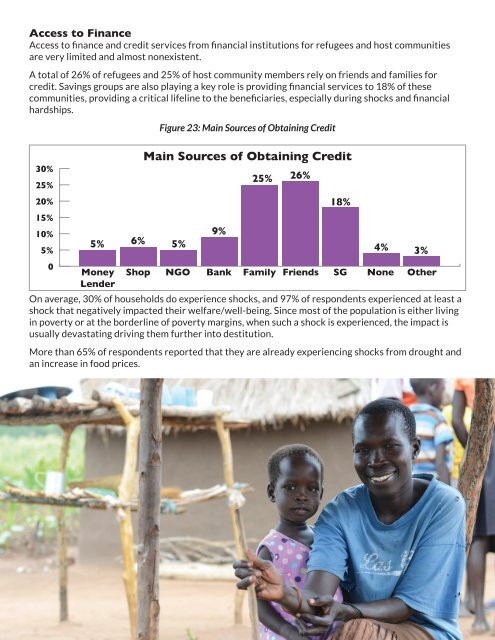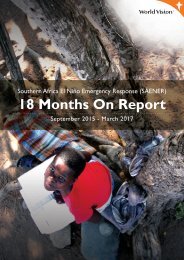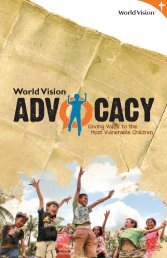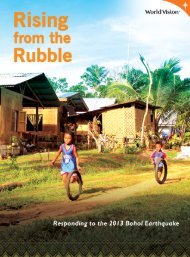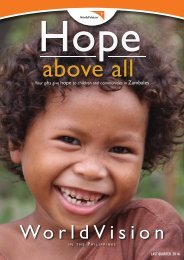INTER-AGENCY LIVELIHOOD ASSESSMENT - ARUA DISTRICT NORTHERN UGANDA GOAL
Create successful ePaper yourself
Turn your PDF publications into a flip-book with our unique Google optimized e-Paper software.
Access to Finance<br />
Access to finance and credit services from financial institutions for refugees and host communities<br />
are very limited and almost nonexistent.<br />
A total of 26% of refugees and 25% of host community members rely on friends and families for<br />
credit. Savings groups are also playing a key role is providing financial services to 18% of these<br />
communities, providing a critical lifeline to the beneficiaries, especially during shocks and financial<br />
hardships.<br />
Figure 23: Main Sources of Obtaining Credit<br />
30%<br />
25%<br />
20%<br />
15%<br />
10%<br />
5%<br />
0<br />
Main Sources of Obtaining Credit<br />
25% 26%<br />
18%<br />
9%<br />
5% 6% 5%<br />
4% 3%<br />
On average, 30% of households do experience shocks, and 97% of respondents experienced at least a<br />
shock that negatively impacted their welfare/well-being. Since most of the population is either living<br />
in poverty or at the borderline of poverty margins, when such a shock is experienced, the impact is<br />
usually devastating driving them further into destitution.<br />
More than 65% of respondents reported that they are already experiencing shocks from drought and<br />
an increase in food prices.


